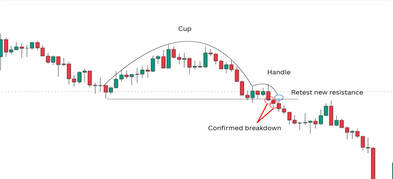Important Information
This website is managed by Ultima Markets’ international entities, and it’s important to emphasise that they are not subject to regulation by the FCA in the UK. Therefore, you must understand that you will not have the FCA’s protection when investing through this website – for example:
- You will not be guaranteed Negative Balance Protection
- You will not be protected by FCA’s leverage restrictions
- You will not have the right to settle disputes via the Financial Ombudsman Service (FOS)
- You will not be protected by Financial Services Compensation Scheme (FSCS)
- Any monies deposited will not be afforded the protection required under the FCA Client Assets Sourcebook. The level of protection for your funds will be determined by the regulations of the relevant local regulator.
Note: Ultima Markets is currently developing a dedicated website for UK clients and expects to onboard UK clients under FCA regulations in 2026.
If you would like to proceed and visit this website, you acknowledge and confirm the following:
- 1.The website is owned by Ultima Markets’ international entities and not by Ultima Markets UK Ltd, which is regulated by the FCA.
- 2.Ultima Markets Limited, or any of the Ultima Markets international entities, are neither based in the UK nor licensed by the FCA.
- 3.You are accessing the website at your own initiative and have not been solicited by Ultima Markets Limited in any way.
- 4.Investing through this website does not grant you the protections provided by the FCA.
- 5.Should you choose to invest through this website or with any of the international Ultima Markets entities, you will be subject to the rules and regulations of the relevant international regulatory authorities, not the FCA.
Ultima Markets wants to make it clear that we are duly licensed and authorised to offer the services and financial derivative products listed on our website. Individuals accessing this website and registering a trading account do so entirely of their own volition and without prior solicitation.
By confirming your decision to proceed with entering the website, you hereby affirm that this decision was solely initiated by you, and no solicitation has been made by any Ultima Markets entity.
I confirm my intention to proceed and enter this websiteInsights on What Are Stocks and Bonds?
When it comes to investing, understanding the basic financial instruments available to you is crucial. Two of the most common and foundational investment options, stocks and bonds, are considered among the basic types of investments.

But what are stocks and bonds, and how do they differ from one another? In this article, we’ll break down these financial instruments, helping you make more informed decisions as you enter the world of investing.
Before You Invest
Investing is the process of putting your money to work in order to achieve your financial goals, whether that’s saving for retirement, building wealth, or generating extra income. The basic idea behind investing is to grow your money over time by purchasing assets that have the potential to increase in value or provide regular payments.
There are many different asset classes available to individual investors, including stocks, bonds, mutual funds, and exchange-traded funds (ETFs). Each of these investment options comes with its own set of risks and rewards. For example, stocks offer the opportunity for higher returns and company ownership, while bonds provide more predictable income through fixed interest payments.
Before you start investing, it’s important to consider your financial goals, how much risk you’re willing to take, and your investment time horizon. Many investors choose to build a balanced portfolio that includes a mix of stocks and bonds to help manage risk and take advantage of different market opportunities. By understanding the basics of investing and the various types of securities available, you can make more informed decisions and set yourself up for long-term financial success.
What Are Stocks?
Stocks, also known as shares or equities, represent ownership in a company. When you purchase a stock, you’re essentially buying a small piece of that company. This means that if the company does well, your investment can grow, and if the company struggles, you may experience losses.
Owning stocks may also grant shareholders voting rights at shareholder meetings, allowing them to influence company decisions.
How Do Stocks Work?
The stock market is where investors buy and sell shares of companies. When a company decides to raise capital, it may issue stocks to the public in an Initial Public Offering (IPO). Investors can then buy shares on stock exchanges like the London Stock Exchange or the New York Stock Exchange. Stocks are traded on centralized exchanges, while bonds are primarily sold over-the-counter. As a shareholder, you have the potential to earn profits through dividends (a portion of the company’s earnings) and capital appreciation (an increase in the stock’s value).
Investing in stocks comes with a higher level of risk compared to other investments, but the potential rewards can be substantial. If the company you invest in grows and becomes more profitable, the value of your shares may increase, allowing you to sell them at a profit.
What Are Bonds?

Bonds are debt instruments issued by governments, municipalities, or corporations to raise capital. When you buy a bond, you’re essentially making a loan to the issuer in exchange for periodic interest payments and the return of the principal amount when the bond matures. Bonds are typically issued for a set period, after which the principal is repaid to the investor.
How Do Bonds Work?
Bonds work a bit differently than stocks. While stocks offer ownership, bonds offer a promise of repayment. For example, when you purchase a government bond, you’re lending the government money, and in return, the government promises to pay you interest over the life of the bond. Once the bond matures, the issuer is required to pay back the original investment. Bonds are a type of security that offers investors regular interest payments and the return of principal. Some bonds carry tax advantages, making them a tax-efficient investment option.
The key benefit of bonds is their relatively stable nature. While stocks can experience volatility, bonds are generally considered a safer investment, making them ideal for more conservative investors. They can provide a reliable income stream through interest payments, which is especially attractive for those seeking lower-risk investments. Many investors choose to hold bonds in their portfolios as a way to save for retirement or long-term needs.
What Are Stocks and Bonds: Key Differences
Now that we’ve discussed what stocks and bonds are, let’s take a closer look at the key differences between these two popular investment options:
| Feature | Stocks | Bonds |
| Ownership vs. Lending | Represents ownership in a company. | Represents a loan to the issuer (government, corporation). |
| Risk and Return | Higher risk due to market volatility; potential for higher returns (growth and dividends). | Lower risk with more stability; typically offers lower returns (interest payments). |
| Income Generation | Potential for dividends, but not guaranteed. | Provides regular interest payments (coupon payments). |
| Time Horizon | Suitable for long-term investment due to potential for growth over time. | Suitable for shorter-term investment or capital preservation. |
| Volatility | High volatility; value can fluctuate significantly. | Lower volatility; more predictable income. |
| Market Sensitivity | Sensitive to company performance, market trends, and economic conditions. | Sensitive to interest rates and issuer’s creditworthiness. |
| Goal of Investment | Growth-focused (capital appreciation and dividends). | Income-focused (interest payments and capital preservation). |
How to Choose Between Stocks and Bonds
So, how do you decide between investing in stocks or bonds? The choice depends on several factors, including your risk tolerance, investment goals, and time horizon..
Risk Tolerance: If you’re comfortable with market volatility and have a long-term investment outlook, stocks may be a better choice for you. Conversely, if you prefer stability and are more risk-averse, bonds may be more suitable.
Investment Goals: Are you looking for growth or income? Stocks tend to offer more growth potential, while bonds are better suited for those seeking consistent income with lower risk.
Time Horizon: If you’re investing for the long term, stocks may be a better option due to their potential for higher returns. For shorter-term goals or capital preservation, bonds are likely a safer bet.
The Role of Stocks and Bonds in Your Portfolio

A well-balanced investment portfolio typically includes a mix of stocks and bonds to provide both growth potential and stability. By diversifying across asset classes, you can reduce your overall risk while maximizing your returns. Mutual funds and exchange traded funds allow investors to pool their money to invest in a diversified portfolio of stocks and bonds.
Stocks for Growth: If your primary goal is to grow your wealth over time, stocks can be a powerful vehicle for achieving that. Equity holders have a claim on company assets and may benefit if the company performs well.
Bonds for Stability: Bonds, on the other hand, can act as a stabilizing force in your portfolio, providing regular income and reducing the impact of stock market volatility. Companies and governments issue bonds to raise money for various projects or operations.
Conclusion
Understanding what are stocks and bonds is an essential first step in your investment journey. Stocks offer the potential for high returns and growth, but they come with higher risk. Bonds provide stability and reliable income, but they tend to offer lower returns.
By considering your financial goals, risk tolerance, and time horizon, you can make informed decisions about how to incorporate these investments into your portfolio. Whether you’re new to investing or looking to refine your strategy, balancing stocks and bonds can help you achieve a more robust and diversified investment plan.
Ready to get started? Explore your investment options today with Ultima Markets and build a portfolio that suits your goals and risk profile.
Disclaimer: This content is provided for informational purposes only and does not constitute, and should not be construed as, financial, investment, or other professional advice. No statement or opinion contained here in should be considered a recommendation by Ultima Markets or the author regarding any specific investment product, strategy, or transaction. Readers are advised not to rely solely on this material when making investment decisions and should seek independent advice where appropriate.












